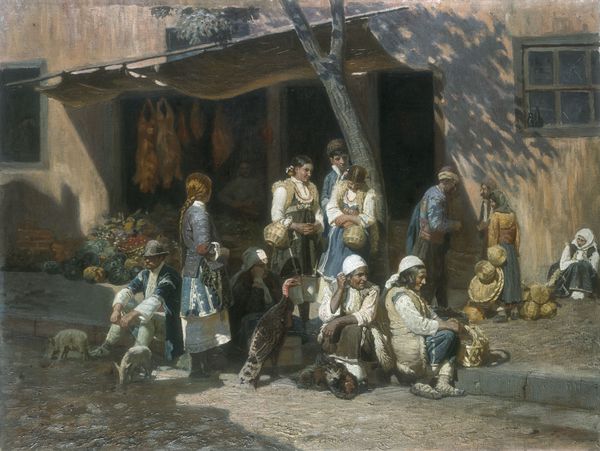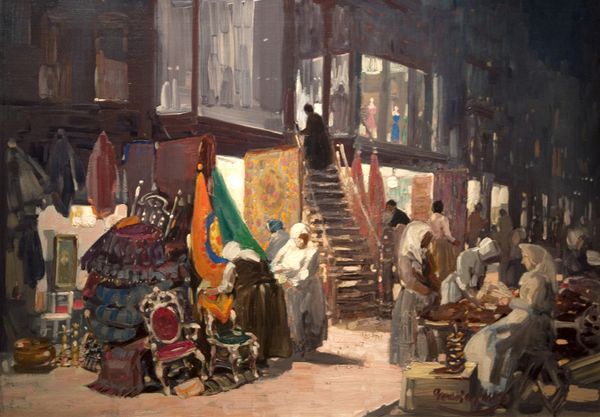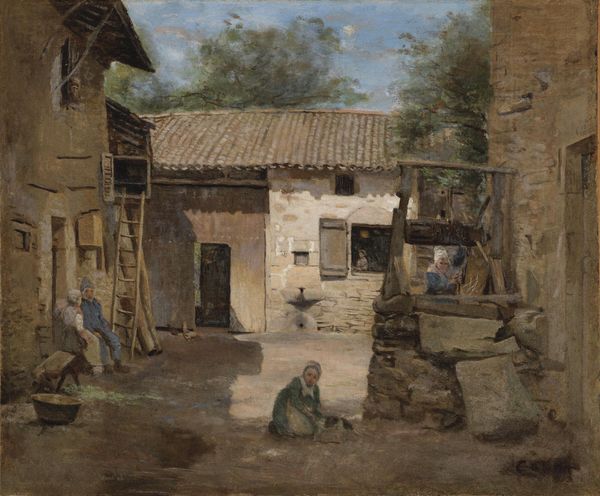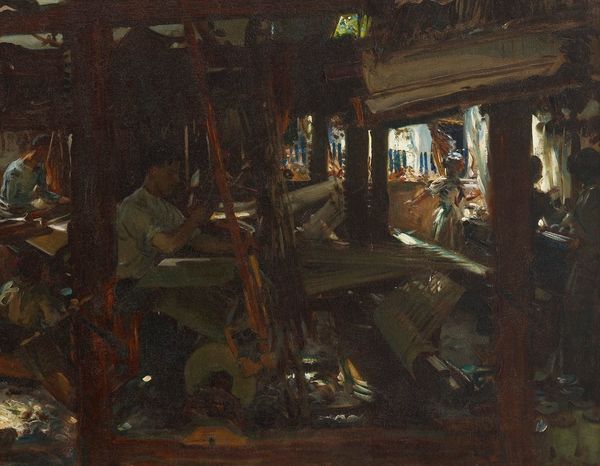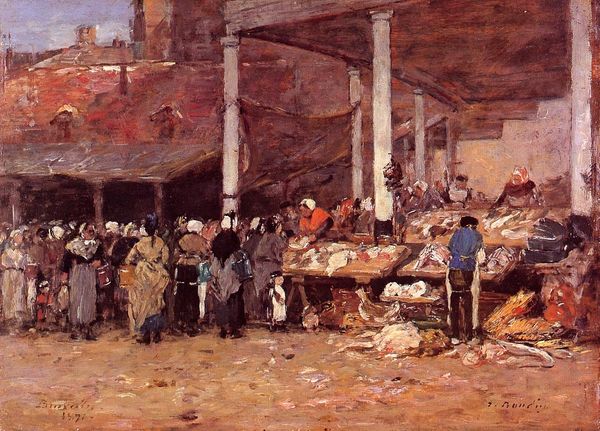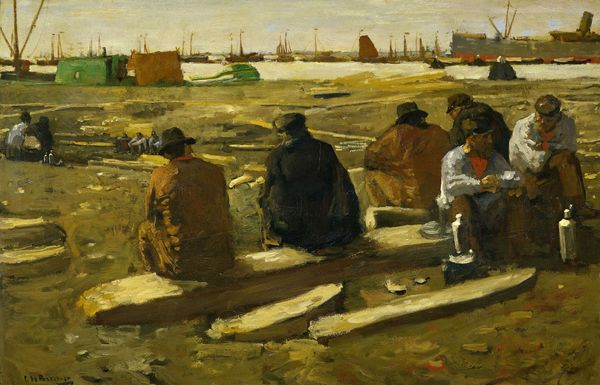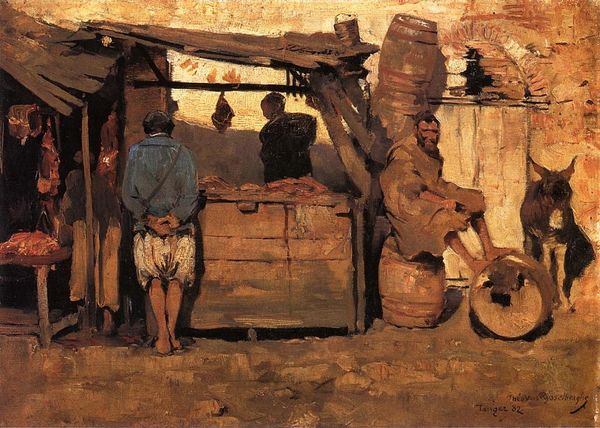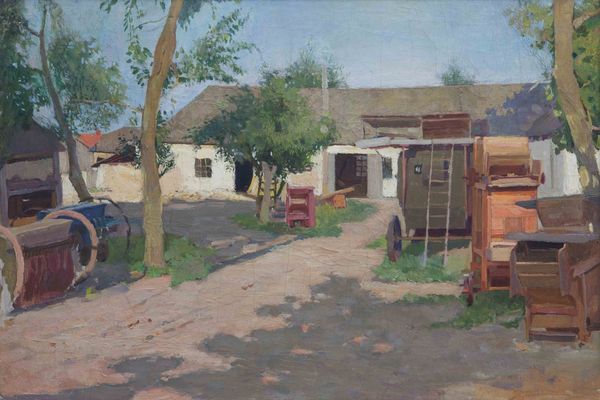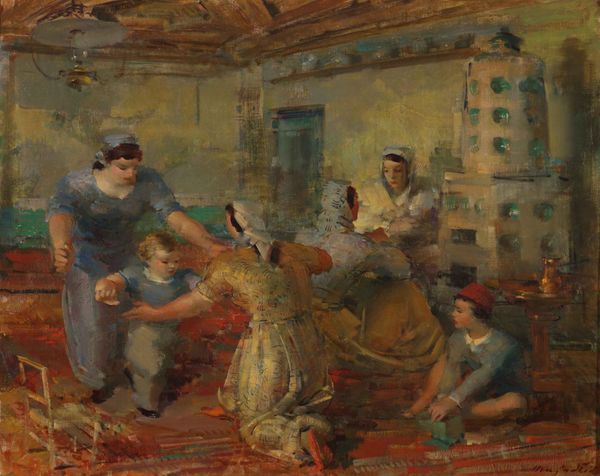
painting, oil-paint
#
painting
#
impressionism
#
oil-paint
#
landscape
#
oil painting
#
urban life
#
genre-painting
#
realism
Copyright: Public Domain: Artvee
Curator: What immediately strikes me about this scene is the sheer repetitiveness. The rows of women, the tubs, even the rhythm of the architectural supports – it speaks volumes about labor and industrialization. Editor: I see the fatigue in the scene. Look at the bent backs, the dark interiors. Despite the architectural framework, it’s a deeply human and even melancholic space. Curator: The piece is entitled “Lavaderos De La Barceloneta,” and while its date is unknown, it's an oil painting by Santiago Rusiñol. Barceloneta, of course, is the old maritime district of Barcelona, and the lavaderos, or public washhouses, were a central feature of that community. It’s fascinating how he captures the architecture itself – a place of both industry and social exchange. Editor: The textiles tell a story too, don’t they? All those individual garments intermingling – each one carrying its own history, stain, and story. It gives the space a sense of a collective, shared burden. I'm drawn to the fact that Rusiñol highlights this traditionally "feminine" space. He immortalizes the gestures, labor and toil of ordinary women performing household work. It adds a sentimental value to a task typically taken for granted. Curator: Absolutely. I’m interested in the actual creation process here – the brushstrokes, the way he builds up the layers of paint to represent not just the scene, but the wear and tear on this social structure itself. Notice how he employs very little color. Editor: And look at the placement of the figures! Some are almost silhouettes against the light, hinting at anonymity and the draining nature of the task. Their individual identities become submerged in the uniformity of labor. I find the space almost womb-like; their bodies appear buried deep in a sacred domestic setting, where labor, exhaustion, and unity are shared between women. Curator: Right, a fascinating intersection between genre painting and a kind of gritty realism. He’s revealing the structure and support that enable daily life. Without the labor enacted in that specific setting, nothing exists beyond it. Editor: And I'm reminded of how public washhouses throughout history represented not just a site of labor but also a critical hub of community for working-class women. Thank you for directing our gaze toward this unsung story of social work and support. Curator: A testament to daily rhythms, that we all share even today.
Comments
No comments
Be the first to comment and join the conversation on the ultimate creative platform.



